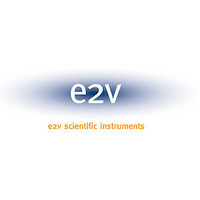PCX107AVZFU100LC E2V, PCX107AVZFU100LC Datasheet - Page 17

PCX107AVZFU100LC
Manufacturer Part Number
PCX107AVZFU100LC
Description
IC PCI BRIDGE MEM CTRLR 503PBGA
Manufacturer
E2V
Datasheet
1.PCX107AVZFU100LC.pdf
(52 pages)
Specifications of PCX107AVZFU100LC
Controller Type
PCI Controller
Interface
PCI
Voltage - Supply
2.375 V ~ 2.625 V
Operating Temperature
-40°C ~ 110°C
Mounting Type
Surface Mount
Package / Case
503-PBGA
Lead Free Status / RoHS Status
Contains lead / RoHS non-compliant
Current - Supply
-
Available stocks
Company
Part Number
Manufacturer
Quantity
Price
6.1.2
2137D–HIREL–08/05
Thermal Management Information
An estimation of the chip junction temperature, T
T
where
T
R
P
The junction-to-ambient thermal resistance is an industry-standard value that provides a quick
and easy estimation of thermal performance.
resistances (R
boards with two internal planes (2s2p). Which value is closer to the application depends on the
system board thermal resistance and the density of other high-power dissipation components.
To illustrate the process, determine the junction temperature based on the values provided in
Table 6-1
ues. If the PC107 is doing most of the power dissipation, use R
1. The ambient temperature near the device is 45°C. Suppose the total typical power dissipation
at 100 MHz core frequency is 2.1W (see
T
If this value is less than the maximum junction temperature noted in
not need a heat sink. If the ambient temperature is higher or the power dissipation is higher
because of faster bus speed, the device will probably need a heat sink.
The PC107 may need a heat sink depending on the system. This section provides thermal man-
agement information for the flip chip plastic ball grid array (FC-PBGA) package for air-cooled
applications. Proper thermal control design is primarily dependent on the system-level design–
the heat sink, airflow, and thermal interface material. To reduce the die-junction temperature,
heat sinks may be attached to the package by several methods–spring clip to holes in the
printed-circuit board or package, and mounting clip and screw assembly (see
ever, due to the potential large mass of the heat sink, attachment through the printed-circuit
board is suggested. The force of the heat sink on the die should not exceed 6 lb.
The heat sink surface must be flat without protrusions and must be parallel with the die as the
heat sink is brought into contact to avoid chipping the edges of the die and the heat sink.
Because of the small contact area of the heat sink, it is suggested that the mounting force be
centered over the die.
A
J
J
D
θJA
= T
= ambient temperature for the package (°C)
= 45 + (2.1 × 26) = 100°C.
= power dissipation in the package (W)
= junction-to-ambient thermal resistance (°C/W)
A
+ (R
for an PC107 that is mounted on a board with many internal planes using arbitrary val-
θJA
θJA
× P
or R
D
)
θJMA
). Two test boards are used: single-signal-layer (1s) and four-layer
Table
6-3). The junction temperature is:
Table 6-1
J
, can be obtained from the equation:
has four junction-to-ambient thermal
θJMA
of 26°C/W given in
Table
5-1, the PC107 will
Figure
PC107A
6-1); how-
Table 6-
17












